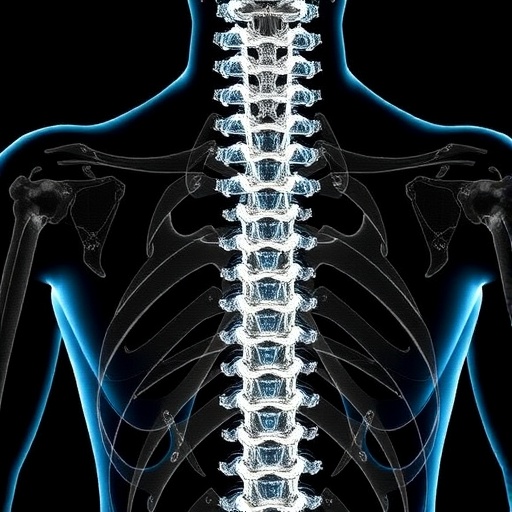
Pulmonary embolism (PE) represents a critical clinical challenge within emergency medicine, often presenting as an urgent diagnostic dilemma. A recently published article in the esteemed journal Academic Emergency Medicine has cast new light on the application of D-dimer testing, particularly among patients exhibiting a high clinical probability of PE. This study scrutinizes the reliability of D-dimer tests, primarily aimed at improving clinical decision-making processes in emergency departments.
The investigation, led by Dr. Héloïse Bannelier and her team, is a meticulous post hoc analysis that brings together data from three significant European studies: PROPER, MODIGLIANI, and TRYSPEED. Each of these studies involved patients who were categorized as high risk for PE using established clinical assessment tools. The study’s intent revolves around addressing an existing gap in guidelines that suggest foregoing D-dimer testing for patients at high risk, despite the lack of substantial evidence supporting this exclusion.
By focusing on D-dimer levels, the researchers sought to explore whether a negative D-dimer result among this specific cohort could safely rule out the presence of PE. Traditionally, D-dimer testing is lauded for its high negative predictive value in patients deemed to be at low to moderate risk for PE. However, when the clinical probability escalates, the increased prevalence of PE can diminish the test’s efficacy, leading to a worrying risk of missed diagnoses. Thus, the applicability of D-dimer testing for high-risk individuals has remained a contentious issue.
In this study, a meticulous review of patient data revealed that those with D-dimer levels below the age-adjusted threshold did not experience missed cases of pulmonary embolism — a finding that could reshape established protocols. However, the researchers were careful to note the limitations of their sample size, underscoring that while results are promising, they do not conclusively determine the safety of relying on D-dimer testing in high-risk patients. This aspect leaves the door open for further investigation, as additional research would be beneficial to validate these findings across larger populations and varied clinical settings.
Pulmonary embolism is a challenging diagnosis to make. Its symptoms overlap significantly with other conditions, which can lead to diagnostic errors if reliance is placed solely on clinical presentation. The current standard of care emphasizes the importance of thorough assessment using validated scoring systems such as the Wells criteria or the Geneva score. These frameworks guide clinicians in identifying patients who warrant further diagnostic evaluation through imaging—commonly computed tomography pulmonary angiography (CTPA) or ventilation-perfusion (V/Q) scans.
Despite these established methodologies, a significant proportion of patients remain exposed to unnecessary invasive procedures and the inherent risks associated with them. This highlights an urgent need for innovation in diagnostic protocols, particularly for patients deemed at high risk for PE. The potential for D-dimer testing to find a role in this patient population could lead to a more nuanced approach in emergency medicine, allowing for effective triage while minimizing potential harm.
Among the implications of these findings is the prospect for an evolution in clinical guidelines for managing PE. Should subsequent studies corroborate the current research, healthcare authorities might consider revisiting recommendations regarding the use of D-dimer testing in high-probability scenarios. This could reinforce a paradigm shift from a more cautious and conservative approach to a more evidence-based practice that embraces the full spectrum of available diagnostic tools.
Furthermore, achieving consensus on this issue may open avenues for enhancing patient outcomes in emergency departments across the globe. By fostering a more data-driven approach, it’s plausible to enhance the accuracy of PE diagnoses, thus reducing the likelihood of serious complications stemming from undetected embolic events. In this context, the medical community must acknowledge the critical role of continued research and discourse in refining existing protocols.
In conclusion, while the findings from this new study elucidate important insights regarding D-dimer testing in high-risk pulmonary embolism patients, it also signals a vital call to action for further investigation. Research in this area not only holds promise for better patient care but also emphasizes the dynamic nature of medicine, where evolving evidence must continuously reshape clinical practices. The quest for improved diagnostic accuracy in PE is ongoing, and every step taken brings clinicians closer to optimal management strategies that ensure patient safety and efficacy.
Subject of Research:
Article Title:
News Publication Date:
Web References:
References:
Image Credits:
Keywords:
Tags: clinical decision-making in PE assessmentD-dimer testing in emergency medicineDr. Héloïse Bannelier researchemergency department protocols for PEEuropean studies on D-dimer levelsevaluating diagnostic tools for pulmonary embolismguidelines for D-dimer testinghigh clinical probability of pulmonary embolismimplications of D-dimer resultsnegative predictive value of D-dimerpost hoc analysis of PE studiespulmonary embolism diagnosis in high-risk patients





